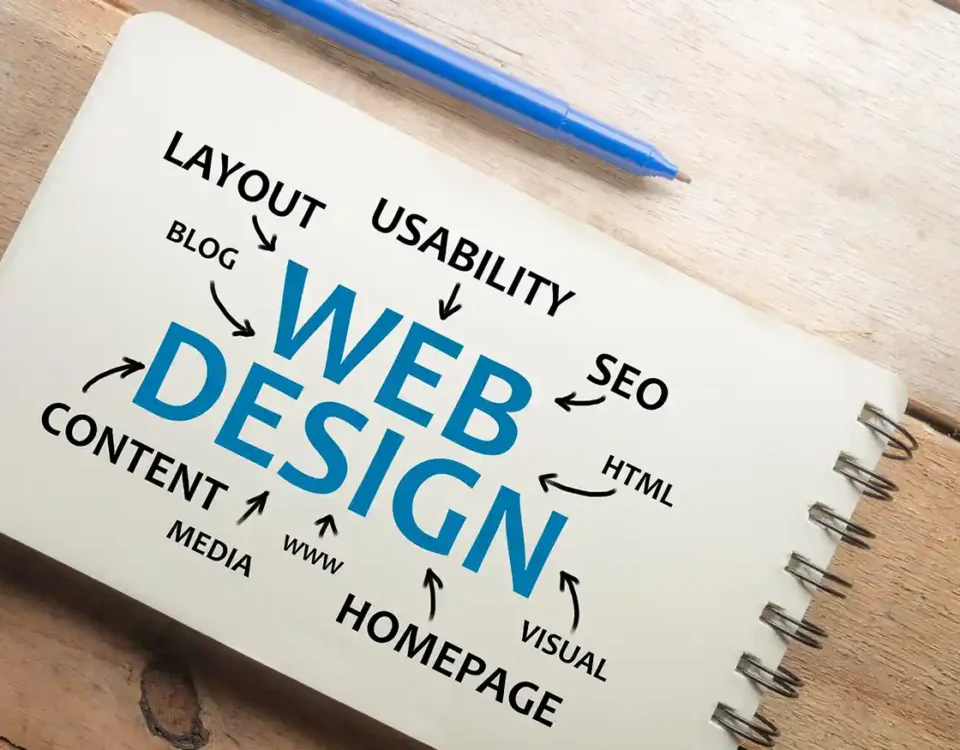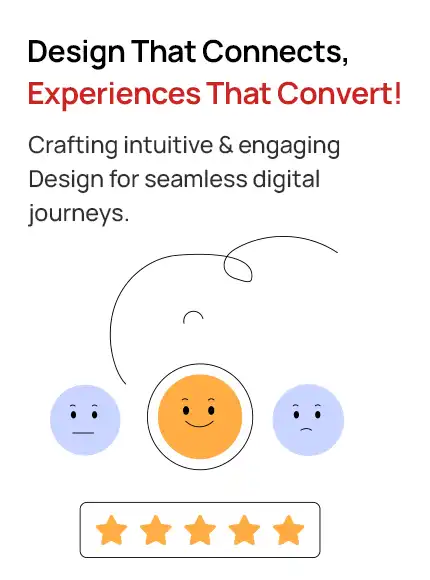
SEO for Therapists: How to Grow Your Practice Online
August 27, 2025
Top Proven Strategies for Effective Digital Branding
September 5, 2025
SEO for Therapists: How to Grow Your Practice Online
August 27, 2025
Top Proven Strategies for Effective Digital Branding
September 5, 2025Web Design for Manufacturing Companies
September 03, 2025
- 18 min to Read
Introduction
In the modern business world, the first impression of a manufacturing company is rarely made at a trade show or in a boardroom.
Instead, it often begins online—with a website. For an industry that deals with complex products, technical processes, and long decision-making cycles, web design for manufacturing companies is no longer optional. It’s the bridge that connects factories with buyers, distributors, and partners worldwide.
This guide breaks down how manufacturers can use web design to showcase capabilities, build credibility, and ultimately generate more leads.
Why Web Design Matters for Manufacturing Companies
Unlike retail or service-based businesses, manufacturers operate in an environment where decisions are driven by trust, technical details, and proven reliability. Buyers often compare multiple suppliers before reaching out, and a professional website can make the difference between being shortlisted or overlooked.
A good website does more than display a logo and phone number. It:
- Positions the brand as an authority in its field.
- Communicates capabilities like machinery, certifications, and processes.
- Supports the sales team by answering initial questions buyers may have.
- Builds global visibility, especially if the company exports.
Challenges in Web Design for Manufacturing
Before diving into best practices, it’s important to understand the unique challenges manufacturers face when building websites:
1. Complex product information
Manufacturing companies often deal with technical specifications, product variations, and compliance details that need to be presented clearly.
2. Longer buying cycles
Unlike quick e-commerce decisions, manufacturing purchases involve weeks or months of evaluation. Websites must nurture trust over time.
3. Diverse audiences
From engineers and procurement officers to distributors and end-users, websites need to cater to multiple types of visitors.
4. Global competition
Manufacturers often compete internationally, making strong design and SEO even more critical.
These challenges make manufacturing web design a specialized task, not just a generic web project.
Key Elements of a Manufacturing Website
To make a strong impression and attract leads, every manufacturing company’s website should include the following elements:
1. Clear Navigation and Structure
Buyers should be able to quickly find product categories, technical data, or case studies. A clean menu structure with well-organized pages prevents confusion.
2. Product & Service Showcase
High-quality product photos, detailed specifications, and downloadable PDFs can help potential clients understand exactly what you offer. For custom manufacturing, case studies or application examples work well.
3. About the Company & Capabilities
Manufacturers need to highlight their expertise—machinery, processes, certifications, plant facilities, and team. This reassures potential buyers of the company’s credibility.
4. Industries Served
Many manufacturers supply to multiple industries such as automotive, aerospace, construction, or electronics. Dedicated “Industries Served” pages allow targeted messaging for each sector.
5. Calls-to-Action (CTAs)
A website should guide visitors toward action:
- “Request a Quote” forms
- Distributor locator tools
- Consultation booking links
- Contact forms with file upload for technical drawings
Best Practices in Web Design for Manufacturing Companies
When it comes to web design in manufacturing companies, certain best practices make a big difference:
- Professional yet modern look – An outdated design can reduce trust. Clean visuals and consistent branding help.
- Mobile responsiveness – Many decision-makers browse on mobile devices during commutes or meetings. Fast loading speed – Large images or product catalogs can slow sites, so optimization is key.
- Visual storytelling – Short factory videos, employee photos, and production process clips make the brand relatable.
- SEO structure – Content should target relevant keywords like “CNC machining services in Florida” or “industrial component manufacturing.”
These elements ensure the site appeals to both search engines and human visitors.
Must-Have Functionalities for Manufacturing Websites
Modern manufacturing websites aren’t just digital brochures—they’re powerful business tools. Some useful features include:
- Searchable product catalogs for easy browsing.
- Request a Quote (RFQ) forms with options for uploading technical drawings or specifications.
- CRM integration to directly capture and manage leads.
- Client portals where repeat buyers can track orders or download documents.
- Multilingual options for companies targeting international markets.
Content Strategy for Manufacturing Companies
Strong design needs equally strong content. Here’s how manufacturers can use content effectively:
- Educational blogs – Articles like “How to Choose the Right Material” or “Latest Trends in Industrial Automation” position the company as an expert.
- Downloadable resources – Whitepapers, catalogs, and guides help buyers make informed decisions.
- Case studies – Real-life project examples showcase reliability.
- Video content – Plant tours, process demonstrations, and client testimonials add a human touch.
- FAQs – Addressing common buyer concerns upfront saves time and builds confidence.
This approach ensures the website is not only visually appealing but also genuinely useful.
SEO Best Practices for Manufacturing Companies
A well-designed website for manufacturing companies is only effective if it’s discoverable by the right audience. SEO (Search Engine Optimization) ensures your website ranks for relevant searches, attracts qualified leads, and builds authority in your industry. Below are the essential SEO best practices every manufacturing company should implement.
1. Local SEO: Connect with Regional Buyers
Local SEO helps manufacturers target buyers, distributors, and partners in specific regions. Many industrial purchases prefer nearby suppliers to reduce shipping costs, logistics challenges, and communication delays.
Best Practices for Local SEO:
- Claim and optimize your Google Business Profile with accurate contact info, working hours, and categories.
- Add location-specific keywords on your service and landing pages, e.g., “CNC machining services in Chicago.”
- Create dedicated location landing pages for multiple facilities.
- Collect positive reviews on Google and industry directories to improve credibility and local rankings.
- Include NAP (Name, Address, Phone) consistency across all online platforms.
Local SEO ensures your manufacturing business is visible when potential clients search for services in your region.
2. B2B SEO: Target Niche Industrial Keywords
Manufacturing businesses often deal with highly specific products or services, and buyers use precise search terms when looking for suppliers.
B2B SEO Strategies:
- Conduct keyword research targeting technical terms like “precision sheet metal fabrication” or “industrial conveyor manufacturer.”
- Create pillar pages highlighting key services or products.
- Use supporting blog content to answer technical questions, e.g., “Choosing the right metal grade for industrial applications.”
- Implement structured data on product and service pages to help search engines understand specifications.
B2B SEO ensures your site attracts qualified, decision-making buyers who are ready to engage with your company.
3. On-Page SEO: Optimize Individual Pages
On-page SEO ensures every page communicates clearly with search engines and users.
Key On-Page Techniques:
- Include primary and secondary keywords in titles, headings, meta descriptions, and body content.
- Maintain high-quality content that explains products, services, processes, and industry relevance.
- Use internal linking to connect products, case studies, and technical resources.
- Optimize images, videos, and PDFs with descriptive alt text. Write unique meta titles and headings that reflect page content hierarchy.
Proper on-page SEO ensures each page is discoverable and informative for both search engines and buyers.
4. Off-Page SEO: Build Authority and Trust
Off-page SEO focuses on increasing your website’s authority through external signals.
Best Practices:
- Obtain backlinks from industry directories, trade publications, and associations.
- Publish guest blogs and case studies on authoritative B2B websites.
- Encourage reviews and testimonials from clients on Google or industry platforms.
- Gain social mentions or partnerships with industry influencers.
Off-page SEO demonstrates to search engines that your site is credible, trustworthy, and relevant, which improves rankings for targeted keywords.
5. Technical SEO: Ensure a Fast and Crawlable Website
Technical SEO guarantees your site is easy to navigate, fast, and properly indexed by search engines.
Key Technical SEO Practices:
- Optimize website speed by compressing images, minifying CSS/JS, and using caching.
- Ensure mobile responsiveness for tablets and smartphones. Implement HTTPS to secure the website.
- Use XML sitemaps and structured data for products, services, and reviews.
- Regularly audit for broken links, 404 errors, and crawl issues.
- Optimize PDFs and technical documents for search visibility.
A technically optimized website ensures a smooth user experience and improves your ranking potential.
6. Google Ads for Lead Generation
While technically part of paid search, Google Ads can complement SEO by driving immediate, high-intent leads.
Best Practices:
- Target industrial buyers searching for services like “industrial CNC machining” or “precision metal fabrication.”
- Use location and industry targeting to reach decision-makers.
- Optimize landing pages with strong calls-to-action and lead capture forms.
- Track conversions to ensure campaigns deliver qualified inquiries.
Integrating paid search with SEO creates a consistent stream of leads while organic SEO builds long-term visibility.
7. Analytics & Tracking: Measure SEO Performance
Analytics ensures SEO efforts translate into measurable business results.
Key Steps:
- Use Google Analytics 4 (GA4) and Google Search Console to track traffic, behavior, and keyword performance.
- Monitor which pages generate RFQs or inquiries and optimize them further.
- Track geographic regions and devices to understand user behavior.
- Analyze conversion paths to link SEO performance to revenue.
Data-driven SEO allows manufacturers to refine strategies, allocate resources effectively, and maximize ROI.
Mistakes to Avoid in Manufacturing Web Design
Many manufacturers fall into traps that limit their website’s effectiveness. Avoid these common mistakes:
- Overly technical pages that overwhelm visitors.
- Outdated design that looks unprofessional.
- Missing or unclear calls-to-action.
- Hidden contact details that frustrate potential clients.
By sidestepping these pitfalls, companies can stay ahead of competitors.
Future Trends in Manufacturing Web Design
The digital landscape for manufacturers is evolving quickly. Some future trends include:
- AR/VR product demos – Allowing clients to interact with 3D product models.
- AI-powered chatbots – Answering initial questions instantly.
- Sustainability storytelling – Highlighting eco-friendly practices and materials.
- Smart supply chain integrations – Connecting websites directly with logistics systems.
Conclusion
At Upclues, we understand that a manufacturing company’s website is more than just an online presence—it is a tool to connect with buyers, build trust, and support long-term growth. A well-structured website helps potential clients easily find product information, technical details, and case studies, while also reflecting the professionalism of your brand.
Our focus is on creating websites that are simple to navigate, clear in communication, and designed to generate measurable results. We combine industry knowledge with digital expertise to ensure your website not only looks modern but also works effectively to attract and convert leads. From product showcases and SEO-friendly content to advanced features like AI chatbots or AR product demos, we design websites that keep you ahead of industry trends.
What sets us apart is our approach—we work as your partner, not just a service provider. Every website we build is tailored to meet the unique needs of manufacturing companies, ensuring it supports both your sales goals and customer expectations.
If you’re ready to take the next step in strengthening your digital presence, get in touch with us at hello@upclues.com.
Let’s create a website that helps your business grow with clarity and confidence.





